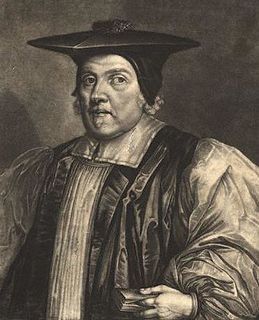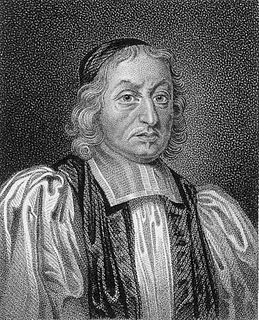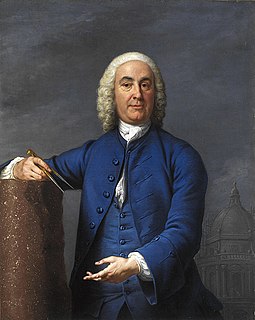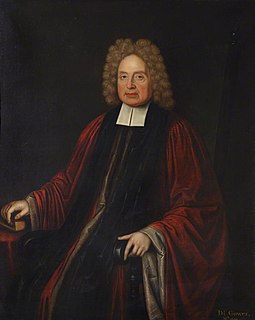
St Benet's Hall is a Permanent Private Hall (PPH) of the University of Oxford. Established in 1897 by Ampleforth Abbey, it is a Benedictine foundation whose principal historic function was to allow its monks to be able to study for secular degrees at the University. Today, most members of the Hall are not monks, but lay undergraduates and graduates. The hall, which is still owned by Ampleforth Abbey, has a Benedictine and Roman Catholic ethos. However, there is no requirement that members of the hall should be Catholics.

Charles Montagu, 1st Earl of Halifax was an English poet and statesman.

Gilbert Sheldon was the Archbishop of Canterbury from 1663 until his death.

Thomas Sprat, FRS was an English churchman, Bishop of Rochester from 1684.

Richard Sterne was a Church of England priest, Archbishop of York from 1664 to 1683.

John Pearson was an English theologian and scholar.

James Gibbs was one of Britain's most influential architects. Born in Scotland, he trained as an architect in Rome, and practised mainly in England. He is an important figure whose work spanned the transition between English Baroque architecture and a Georgian architecture heavily influenced by Andrea Palladio. Among his most important works are St Martin-in-the-Fields, the cylindrical, domed Radcliffe Camera at Oxford University, and the Senate House at Cambridge University

William Bill was Master of St John's College, Cambridge (1547–1551?), Vice-Chancellor of the University of Cambridge (1548) and twice Master of Trinity College, Cambridge, Provost of Eton College (1558–1561) and Dean of Westminster (1560–1561).

John Wynne was Bishop of St Asaph (1715–1727) and of Bath and Wells (1727–1743), having previously been principal of Jesus College, Oxford (1712–1720).
Richard Holdsworth was an English academic theologian, and Master of Emmanuel College, Cambridge from 1637 to 1643. Although Emmanuel was a Puritan stronghold, Holdsworth, who in religion agreed, in the political sphere resisted Parliamentary interference, and showed Royalist sympathies.
George Stradling was Dean of Chichester Cathedral from 1672 until his death.
John Bond LL.D. (1612–1676) was an English jurist, Puritan clergyman, member of the Westminster Assembly, and Master of Trinity Hall, Cambridge.
Edmund Staunton (Stanton) (1600–1671) was an English clergyman, chosen by Parliament as President of Corpus Christi College, Oxford, and a member of the Westminster Assembly. Later he was a nonconformist minister.

William Beale was an English royalist churchman, Master in turn of Jesus College, Cambridge and St John's College, Cambridge. He was subjected to intense attacks by John Pym from 1640, for an unpublished sermon he had given in 1635 supporting royal prerogative. According to Glenn Burgess, Pym's attention to Beale was because he exhibited a rare combination of Arminian or Laudian theological views with explicit political views tending to absolutism.

Humphrey Gower (1638–1711) was an English clergyman and academic, Master of Jesus College, Cambridge and then St. John's College, Cambridge, and Lady Margaret's Professor of Divinity.
Thomas Marshall was an English churchman and linguist, Rector of Lincoln College, Oxford and Dean of Gloucester.

Sir Nathaniel Lloyd (1669–1745) was an English jurist and Master of Trinity Hall, Cambridge.
William Roberts (1585–1665) was a Welsh bishop of Bangor. A royalist, he suffered deprivation of his benefices after the First English Civil War.

William Richardson (1698–1775) was an English academic and antiquary, Master of Emmanuel College, Cambridge from 1736.
William Saywell (1643–1701) was an English churchman and academic, known as a controversialist, archdeacon of Ely, and Master of Jesus College, Cambridge.



















